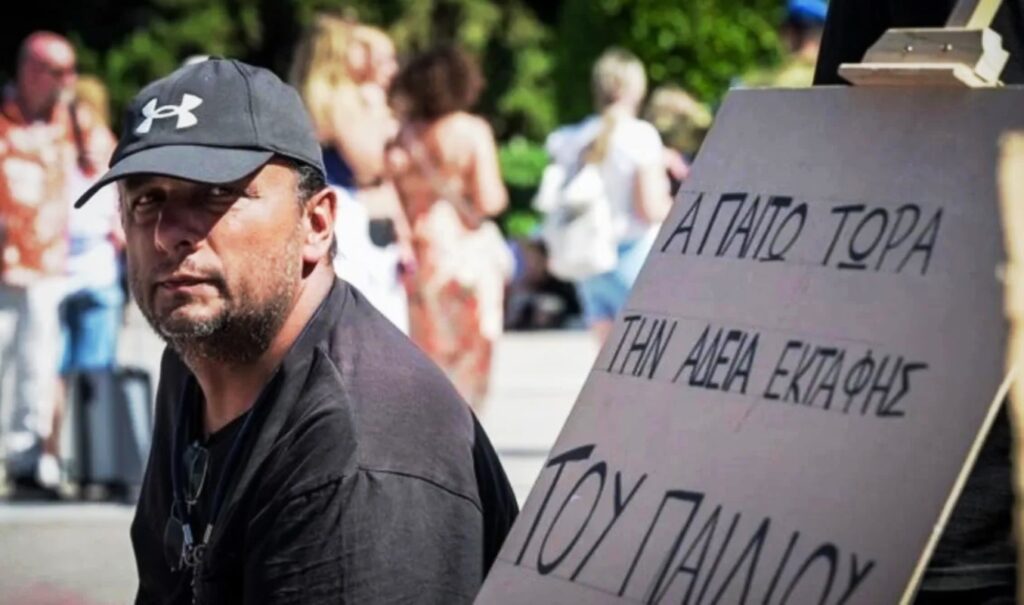A step towards seeking the truth was accepted by Justice, with the approval of the request for exhumation of the body of 22-year-old Denis Routsi. The request had been submitted by his father, Panos Routsi, who for 12 days has been fighting his own battle, going on hunger strike in Syntagma Square and demanding that the real causes of his child’s death in the Tempe train disaster be revealed.
Tempe: Exhumation request approved
By order of the Larissa First Instance Prosecutor to the Larissa Police Department, a preliminary investigation was ordered so that the exhumation procedure could proceed. At the same time, the prosecutor will examine other similar requests submitted by victims’ relatives, a fact that could open the way for a new wave of revelations.
Tempe: What exhumation means – What examinations are requested
It remains unclear whether the exhumation will be limited only to repeat identification through DNA or if it will extend to a full scientific examination. The victims’ families are requesting biochemical, histological and toxicological tests to accurately determine the causes of death.
The exhumation, according to information, allows relatives to appoint technical advisors who will conduct independent expert examinations. The reports that emerge can be submitted in the trial, strengthening the families’ effort to bring the truth to light.
The Justice Minister has emphasized that the exhumation procedure will not cause delays in the trial, which is expected to begin next spring. However, the weight of the exhumation creates new facts that may prove decisive.
Exhumation: The difficult procedure
Exhumation is the removal of a body from its burial site. It is usually carried out after years have passed for burial management reasons. But when ordered by a judicial authority, exhumation takes on a completely different character: it is done to shed light on dark cases, reveal the truth and provide evidence in criminal investigations.
In the case of Tempe, the exhumation of the victims is not a simple administrative procedure. It is a dramatic act that signals the questioning of the initial forensic assessment and strengthens the voices of families who have been demanding transparency and justice for months.
Trial on the horizon – The pain remains
The acceptance of the request for exhumation of Denis Routsi is not just a legal development. It is a step forward, as this procedure could bring new evidence to the trial.
The families of the Tempe victims are not only struggling with the memory of the tragedy, but also with the need for justice to be served. Every decision, every examination, every exhumation represents a drop of light in the darkness. But the questions remain: What will this exhumation reveal? Will it change the course of the trial? And most importantly, will justice ever be served for the Tempe crime?




